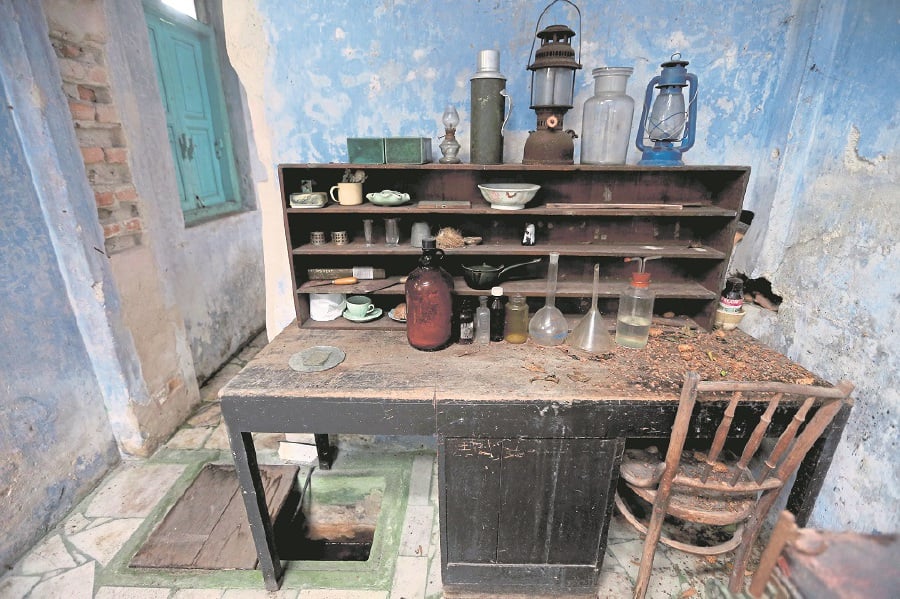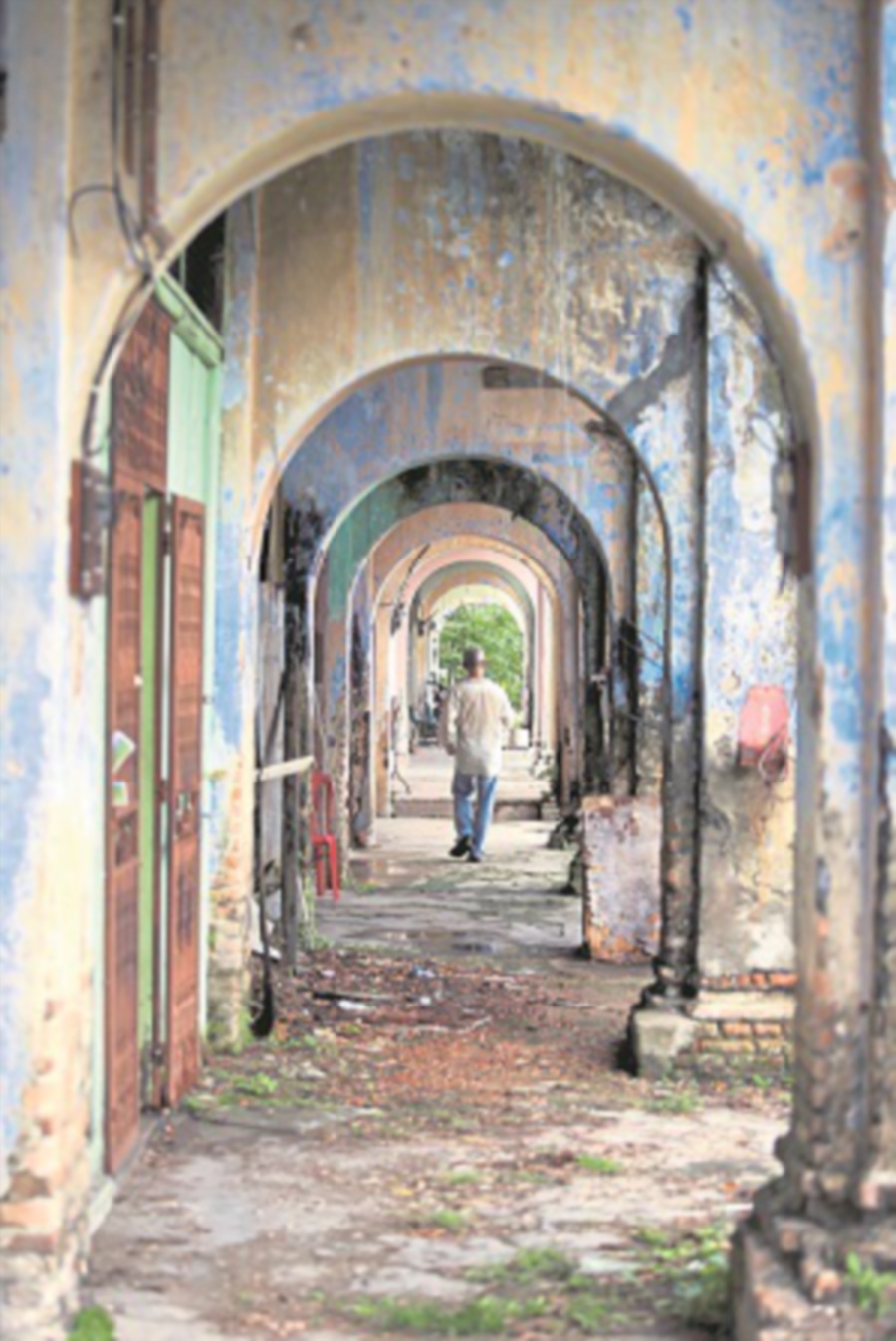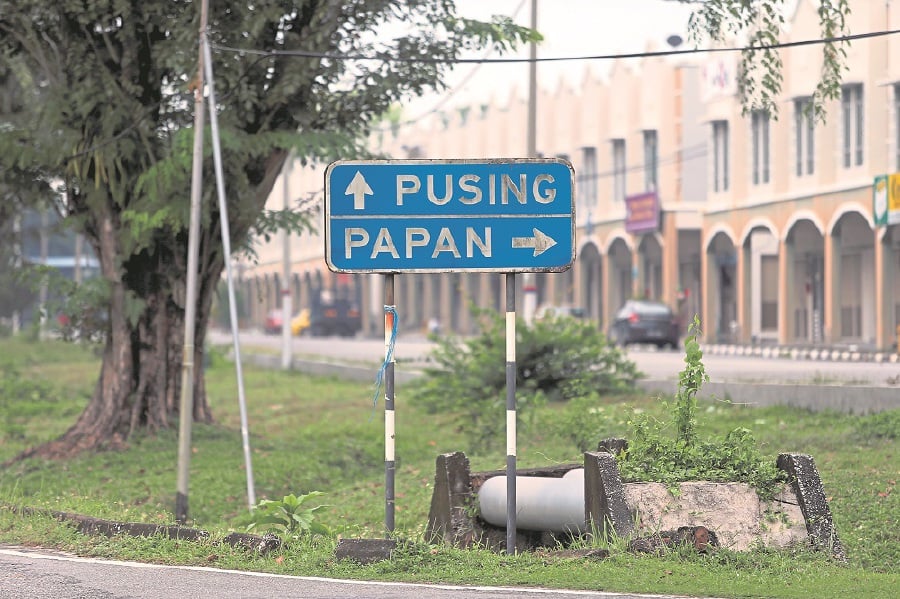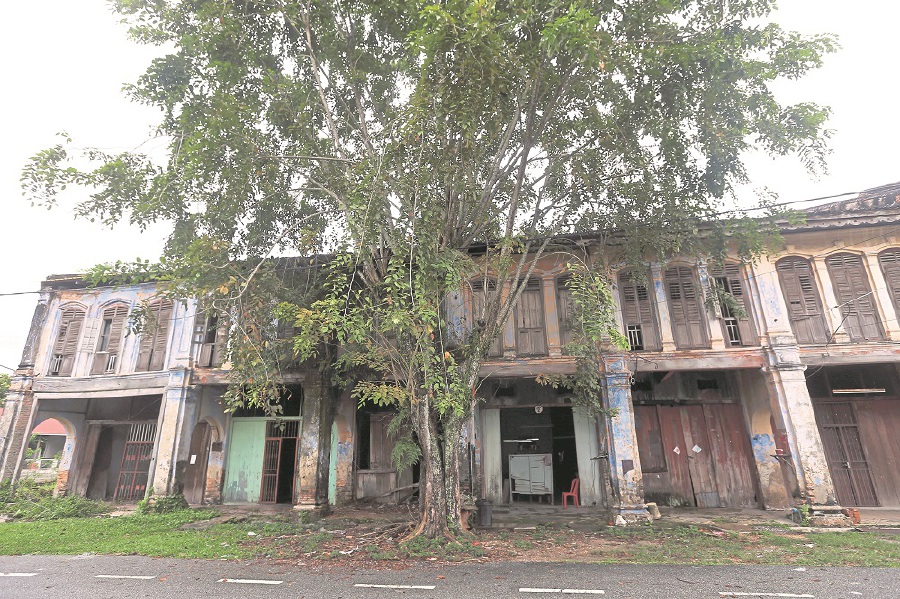
Forgotten Perak town was backdrop of Sybil Kathigasu’s heroism
Published on October 22, 2017 | by nst.com.my
SYBIL Kathigasu’s story of courage and sacrifice is set against the backdrop of Perak’s forgotten town of Papan.
The events that led to the arrest of the wartime nurse and her husband, Dr Abdon Clement, played out in a shophouse in the centre of the one-street town, which the couple moved into following the bombing of Ipoh on Dec 15, 1941.

Over the course of 20 months leading up to their capture in 1943, the facility which was their home and clinic, doubled up as a base for Sybil to aid guerilla fighters resisting the Japanese occupation of Malaya during World War 2.
From the shophouse, she covertly supplied soldiers hiding out in the surrounding hills with medical aid and information gleaned from BBC broadcasts on banned short-wave radio sets.
Sybil did all these knowing fully well the consequences. The ownership of a radio was an offence punishable by death in the eyes of the Japanese.
She died in the United Kingdom in 1948, from injuries sustained during her incarceration in the Batu Gajah prison where she was tortured by the Japanese for refusing to give up information on those she helped.
Sybil is arguably one of the most courageous, yet underrated figures in Malaysian history.

While her story has been left out of history textbooks, despite a Google doodle of her 117th birthday last year, Sybil’s legacy lives on today in that very shophouse at No. 74, Jalan Besar, in Papan.
Cultural activist Law Siak Hong runs a memorial for her there, with an assortment of artefacts, furniture, paraphernalia and tools, unique to clinics and households of the era.
Items on display include forceps used by midwives, a tribute to Sybil’s reputation as a midwife.
The facility operated as a tuition centre before Law rented it in 2002.
It serves as an ode to Papan itself, with black-and-white photographs of its residents from the early 1900s on its walls, as well as books on Sybil and the town, lining its shelves.

There are vintage iron hooks and cangkul used in shops, houses and mines in Papan.
Law said the memorial, a testament to Sybil’s tenacity, was the fading town’s focal point.
He said the preservation of the memorial was tied to the resuscitation of Papan.
“There is no Sybil without Papan, and at the same time, she made the town famous,” he said, drawing on her stay in Papan as instrumental in landing her in prison.
“Sybil was awarded the George Medal in 1947, several months before she died. She was decorated by King George VI and was able to walk to receive it despite being almost crippled by the beatings at the hands of the Japanese.”
“The award is the highest honour bestowed by the British Crown on civilians for bravery, and to date, she is the only Malaysian woman to have received it,” said Law, adding that the recognition Sybil received illustrated Papan’s role.

Papan: Past and Present
Once a pulsating centre of people and activity, Papan is today but a shadow of its glorious tin mining past.
The town at the foot of the Kledang Mountain range where the resistance fighters against the Japanese once hid, is about 30 minutes from Ipoh.
The one-street town is just a handful of abandoned shophouses short of a ghost town.
The pre-war buildings that flank this main street are crumbling.
Gaps of vacant space stand in segments of one, two and sometimes three shophouses, where their exterior and interior walls have disappeared following decades of abandonment.
This was triggered by the mid- 1980s crash in the tin price that forced thousands working in and around Papan to leave, seeking their fortunes elsewhere.

Those who drive into the town out of curiosity after stumbling on its signboard on the trunk road to Batu Gajah from Ipoh, may wonder if the cemetery fringing it has more graves than Papan residents.
Despite this impression, 15 of the 100 lots on the street are still occupied.
The town’s 150 people are sustained by two sundry shops and coffee shops. SKJ(C) Papan stands proud on the street despite haveing about only 30 students.

The shophouse that sees the most activity is where the elderly townsfolk, who make up the bulk of Papan’s population, gather to play mahjong.
Soon, the landscape goes back to buildings with creepers and trees with roots that claw and extend from wall to foundation. This weed look poised to take over a rundown basketball court in the road.
The townfolk, who mainly live in wooden houses, around and behind the main street are mostly retirees and small-time businessmen past their 60s.
There are a number of farmers and migrant workers, operating and tending to smallholdings near the Papan Eco-Forest Park.
A small transient population from Pusing, Batu Gajah and Ipoh trickles into the town to visit the elderly and send their children to the primary school.
To Law, Papan is not just a place for the dead and the dying, it is a living, breathing slice of history.
He said the townfolk’s way of life and places of interest, such as the Koon Yin Temple and the forest reserve, had endured more than 100 years and this called for appreciation and attention.

Law, who is a founding member of the Perak Heritage Society, stressed that Papan had much to offer.
“Such is its significance that seven books have been written about Papan.
“The town traces its roots to the early 1800s as a centre to harvest chenggal trees that were abundant in its surrounding forests. The timber industry, however, collapsed when tin-mining rose to prominence in the late 1800s.
“Then, the Mandaling of West Sumatera, led by Raja Asal, migrated to Papan. Raja Asal, who was recruited by the British to hunt down Raja Ismail in the Kinta Valley for his role in the murder of Perak Resident J.W.W. Birch, was made penghulu of the area.”
The town played host to the Papan riot of 1887 where a brothel brawl escalated into a violent clash between the competing Ghee Hin and Hai San triads.
Papan: Sybil and beyond
Law disclosed to the New Sunday Times that he was pushed to set up the memorial by darker developments gripping the Kinta Valley.
“There was renewed talk that Papan would be opened up for mining in the early 2000s. Rumour is, there is RM200 million worth of tin reserves in the unmined land under the main street.
“A tin miner had already acquired a major portion of the main street in the late 1970s, including the shops, with a plan to demolish the town and mine the land, but he did not succeed in acquiring all the houses. The tin price also crashed, putting plans on hold,” he said, adding that a squatter village was bought up under these plans and converted into a mine, triggering a major migration wave out of Papan and leaving a 90m-deep mining pool.

“There was talk that the town would be subjected to the fate the tin-miner charted for it. I was aware of this and I wanted to do something about it,” said Law, who chose to rent the shophouse with his Employees Provident Fund withdrawals to convert it into a writers’ retreat after cancelling his plan for a world tour.
A tin miner’s son himself, his interest in Papan began in the 1960s as his father’s kepala or mine supervisor had also come from Papan.
“It’s my personal battle. Even as I child, I knew tin mining was environmentally destructive and I was embarrassed to tell people that my father was a miner. Maybe, this is me paying back,” said Law, who was enlisted by campaigners on a mission to save Papan to photograph it in colour slides for the World Monuments Fund, prior to his takeover of the shophouse.
Law is, however, apprehensive about Papan’s future.
“The future is not in my hands, but the weight of history is priceless.
“You cannot say this is a broken house that is worth nothing. Buy it, demolish it and put up a new building and call it a memorial and say this is where Sybil lived.”
“We must not put monetary value on history and heritage. But unfortunately, every building has a price.
“(But) We must see that our lives are related to history. That we are alive because some people made sacrifices in the past.
More stories
>>> The Territorial Army Founder Lines From Lambor Kiri
>>> Kilang kopi Antong masih menggunakan kaedah tradisional untuk pengeluaran kopinya
>>> 10 Malaysian football legends we need to remember
>>> The royal town of Kuala Kangsar
>>> History Of Cameron Highlands
>>> Town that grew from a tin tycoon’s mansion
>>> 7 Hollywood Movies Filmed in Malaysia
>>> Ipoh’s Concubine Lane draws foodies and tourists
>>> There’s a small, charming town near Ipoh that’s rich in biodiversity
>>> Hakka Villa To Reveal Revelational Past
>>> Ipoh Echo Readers’ Choice: Top 5 Ipoh Curry Mee
>>> Royal Belum Welcomes 10 Different Hornbill Species
>>> Ipoh Echo Reader’s Choice: Top 5 Kai Si Hor Fun In Ipoh
>>> Nostalgia: One Man’s Rubbish Is Another Man’s Collectable
>>> Han Chin Pet Soo
>>> 10 things about: Ruth Iversen Rollitt, an Ipoh girl at heart
>>> Nostalgia: Yeoh Ghim Khoon, Transport Entrepreneur
>>> ‘Ipoh Echo’: A community newspaper that has lasted 12 years and counting
>>> Arlene Terrace








